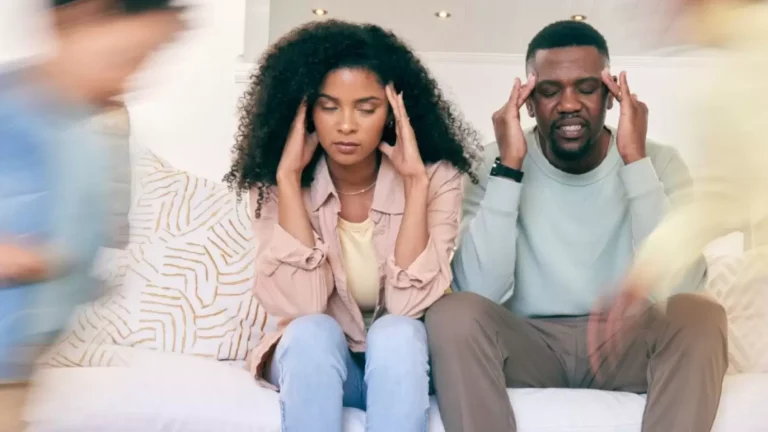Youth mental health programs greatly impact the outcomes of struggling young people, but far too often, youth voices are shut out of the design. Last year, Margo Quinlan, director of youth and older adult policy at the Mental Health Association of Maryland (MHAMD), helped draft a report for the Maryland Governor’s Office of Crime Prevention, Youth, and Victims Services.
The report provides a review of youth-centered and youth-codesigned mental health interventions and prevention models. It also includes recommendations for expanding those practices in Maryland to best meet the mental health needs of young people, including those at risk of incarceration or recidivism.
As Quinlan and MHAMD persist in their advocacy for state-supported youth codesigned projects, their recommendations can serve as a blueprint for mental health programs nationwide. Here are five takeaways for individuals and organizations building youth-centered services.
1. Prioritize youth codesign – not just youth participation
According to the report, under the youth codesign model, “youth are not only the recipient of services but are partners in all elements of that service, including implementation, evaluation, and the evolution of services.”
Rather than giving young people symbolic roles, titles, and speaking opportunities, integrate them into the development of services. Ask for their input on what those services should look like – everything from the design of the waiting room to the strategy for reaching marginalized youth.
Lived experience should be at the heart of this process. That alone qualifies young people to make these kinds of calls about what will and won’t work for their communities.
2. Let young people lead the process
It’s one thing to get young people together in a room or at a meeting. It’s an entirely different thing to engage those young people to participate in a meaningful way.
“Sometimes you have folks with professional expertise that want to use their lingo and move quickly through a meeting, and it’s alienating,” Quinlan said. “It’s not creating a space that’s easy to keep up in, so people will just stay on mute or not show up. Everyone isn’t always up to speed on [the technicalities] of where things are. It takes a lot of intentional level setting.”
A lot of it comes down to the facilitation of spaces. Collaborate with young people as codesigners, facilitators, and leaders – not just participants. This can help ensure that meetings are going at the right pace, focusing on the right things, and supporting the young people who put themselves out there to contribute to the conversation.
3. Be mindful of which perspectives are represented (and which ones aren’t)
Youths aren’t a monolithic group. The experience of one person can be vastly different from that of another, and that’s something to keep in mind when you’re gathering input from young people. Each individual is made up of many dimensions of identity and experiences, and that translates to unique needs and ideas for mental health services.
Be intentional about who is in the room – and for those who aren’t, ask yourself why. Are your meeting times inconvenient for young people with jobs? Can you get to your meeting place via public transportation? Were your recruitment materials created with accessible design and language in mind? Consider the barriers young people face.
4. Build trust and relationships first
Quinlan has seen this modeled at a local drop-in center for unhoused youth. Young people would come to receive services, and as they built a trusted relationship with the organization, they felt more comfortable sitting in on advocacy trainings offered in the same space. From there, a cohort of young people went on to take up leadership roles and staff positions at other organizations.
“Advocacy can help heal some of our own experiences and help us recalibrate and turn our past struggles into helpful energy going forward,” said Quinlan. “And I think some of our ideas are best when we’ve just recently had interactions with police or providers or crisis response. That’s who we want to hear from.”
If you want to inspire meaningful engagement from young people, you need to earn it. Offer them more than just a seat at the table – provide them with leadership development opportunities, a support system to back them up, and an appreciation for who they are as people first and foremost.
5. Allow yourself to be challenged
“We need to really challenge ourselves to listen to lived experience, listen to youth voices, and recognize the leadership capacity of young people,” Quinlan said. “I want people to call me out, and I need to be able to hear that without getting defensive.”
Too often, the reflexive response to conversation and criticism from youth is, “That’s helpful to think about, but that’s not how it really works.” Sentiments like this invalidate the lived experience of young people and perpetuate a harmful status quo. Instead, ask yourself, “Why doesn’t it work this way? What can we do to change that?”
Ideally, we would all be working to build entirely new programs and systems with youth codesign rather than trying to inject youth perspective into pre-existing (and unyielding) structures.
“I think we stop [challenging systems] after a certain age. We just accept things as being as broken as they are and unfixable,” said Quinlan. “I think that there’s room to challenge that in all of us.”
Learn more
- Visit the Mental Health Association of Maryland.
- Get in touch with Margo Quinlan.
- Download the Report on Youth-Centered Behavioral Health Intervention and Prevention Programs, written in collaboration with MHAMD.


